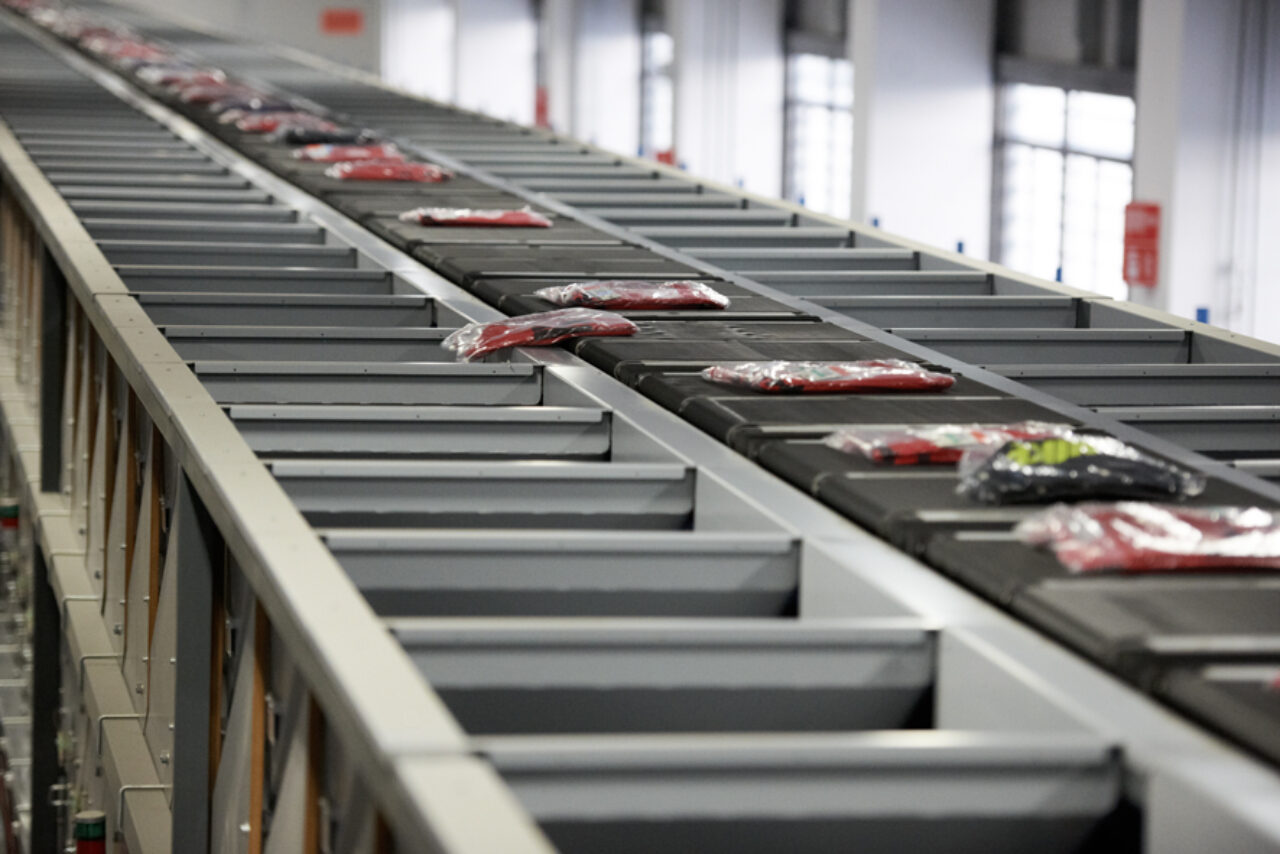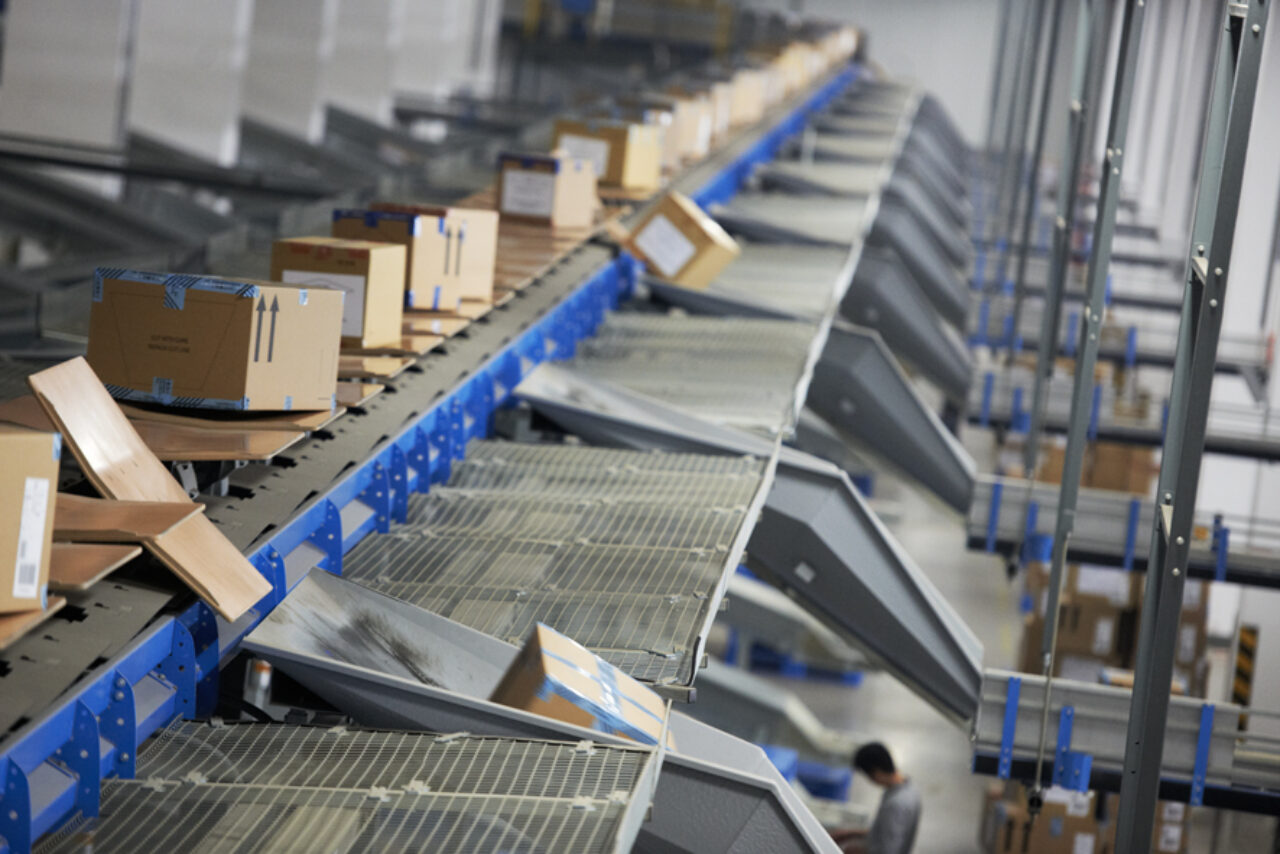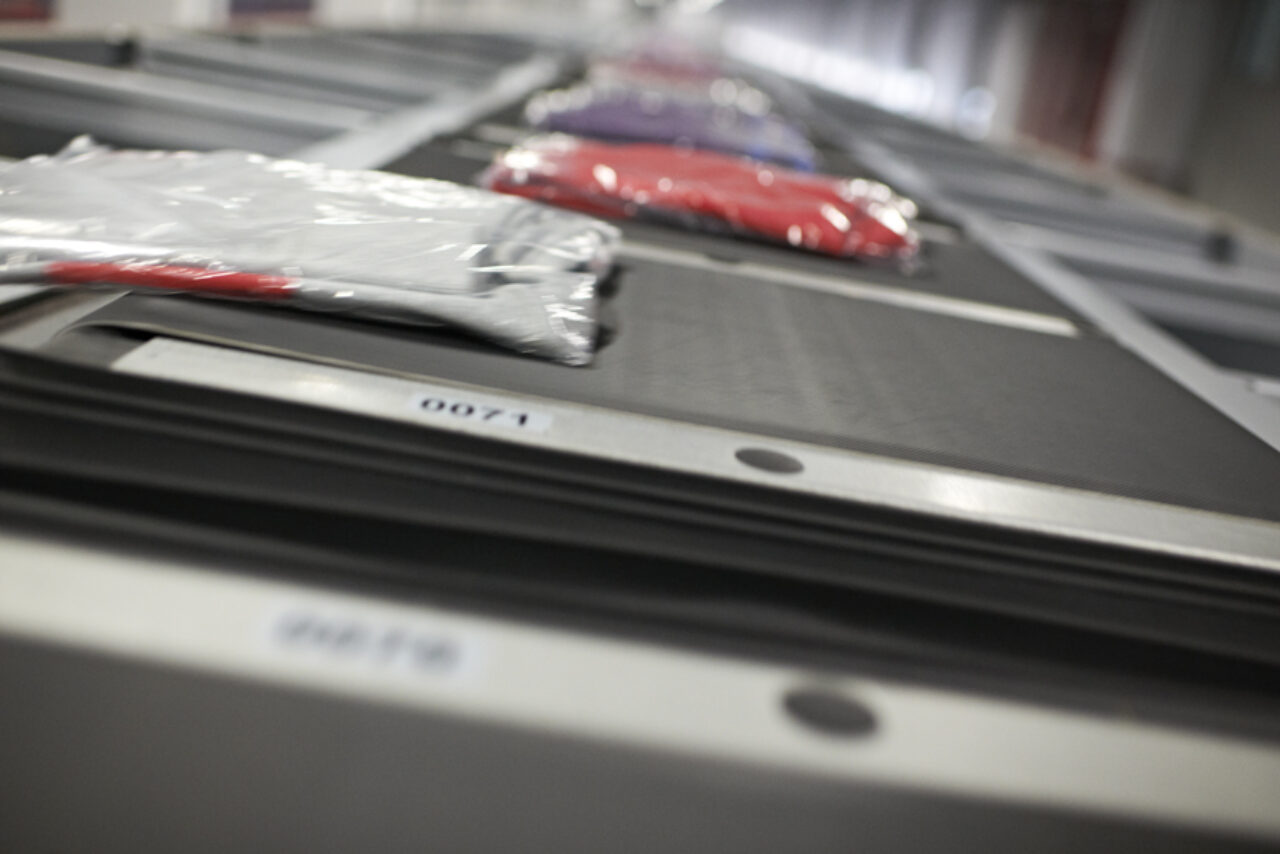When to use Cross-belt vs Tilt-tray
Both are best-in-class, high-speed, high-capacity solutions, but in which situations is one of these sortation systems a better choice than the other?

In loop sortation, tilt-tray and cross-belt sortation systems are both widely recommended as high-speed, high-capacity solutions.
They are both best-in-class solutions, so neither is considered universally superior to the other, although cross-belt is currently a more popular choice than tilt-tray.
Rather, their suitability will depend on what they are going to be used for.
The needs of the warehouse logistics centre are paramount to what is the best choice, which is why it is imperative a thorough assessment is carried out before the selection process.
Preferably this should be conducted by a vastly experienced system provider with a sales catalogue that includes both the cross-belt and tilt–tray systems.
An experienced system provider will know what kind of logistics centre will benefit more from a cross-belt system, and what kind of logistics centre will benefit more from a tilt-tray.
Broken down, there are four operational processes where it is important to discuss system technology defined by needs:
But ultimately, every case is different, which is why such a thorough assessment is needed.
The evaluation of the warehouse’s needs should establish the following:
So when do sortation system providers recommend tilt-tray, and when do they opt for cross-belt?
The provider will be the first to agree there are many similarities between the systems.
Both are energy-efficient, high-capacity systems capable of optimally sorting a wide mix of items. And both have a modular design enabling flexible configurations and drive system options.
So it is very important to be aware of the differences and similarities:

More likely, therefore, the differences will end up determining which system the provider recommends – and this will wholly depend on the needs of the logistics centre.
Ultimately it’s a question of capacity. While both systems can handle varied parcel mixes, the cross-belt can do so at a higher speed. Nevertheless, tilt-tray has a few tricks up its sleeve: the acceleration and speed of its tilting motion enables efficient handling of small, lightweight items, so it could be argued that it is better suited to handling small, lightweight items than the cross-belt. However, tilt-tray has an Achilles heel: the stick-slip effect. Temperature and humidity might cause the build-up of static electricity on specific items – for example, plastic bags – causing the risk of such items sticking to a tilt-tray during the discharge process. Items will never stick to a cross-belt due to temperature and humidity.

Tilt-tray has the edge when it comes to handling long items. Its maximum reach, achieved by using two or more trays at once, exceeds the cross-belt limit – providing the curves are banked, or otherwise the items might fall off.
To counter the possibility of items falling off (‘rolling items’ are particularly vulnerable around curves etc), and to increase the capacity, the tilt-tray can be easily customised. This is often the case to fulfil CEP operations with specialised needs – particularly in relation to uniformity. For parcels of a particular size, one or two tailor-made compartments/pockets can be added to the tray – primarily to ensure the item stays securely in place.
Much will depend on whether the warehouse has the space for automated sortation – and, again, what their capacity needs are. With a loop sorter, the flexibility of the configuration is key. Depending on which size of curves are required, a tilt-tray system can be installed with R2000 (radius two metres) or R3000 curves whereas a cross-belt sorter is usually installed with R3000 and R4000 curves. The selected curve radius depends on the cart pitch and the length of the tray or cross-belt seen perpendicular to the sorter travel direction.
Cross-belt tends to give the system provider more layout options to recommend when there are layout restrictions and has a big trick up its sleeve when it comes to vertical space. Cross-belt requires less vertical space as it does not require a raised carrier surface, as is the case with tilt-tray, which needs room to tilt its deck.

This is a complicated one. Twenty years ago, when robotic systems were still in their infancy, simplicity triumphed over complexity – particularly in lower-throughput applications – and the tilt-tray was the better choice. However, looking forwards, today’s robotic pick-and-place function is capable of such exact placing, so it would be almost illogical to exactly place an item on a tilt-tray and then watch it slide. The opposite is true with a cross-belt, as the exact placing of items enables the system to accurately dispatch and enable optimal end-of-chute handling.
Often, tilt-trays are custom-built with special pockets or compartments to suit a particular type of parcel, so they lack the flexibility to cater to future needs without incurring high costs. The cross-belt, in contrast, is able to grow with the customer’s demands with little effort.
There is very little difference between the cost of a tilt-tray and cross-belt. Ultimately, the choice that best fits the needs of the logistics centre will end up having the lowest TCO, as it will help them to solve their operational needs, optimise their processes and future-proof their system, saving untold costs over the life-cycle. This is why it is so important a logistics centre speaks to a system provider at the very start of their buying journey, so they can help with an evaluation of their needs and a sensible appraisal of which technology is the best fit for their logistics centre.
While cross-belt will enable a warehouse logistics centre to optimise many of their processes, so will tilt-tray, and overall it might be a better choice. The key is not trying to decide which system is best, but rather which system best suits the needs of the logistics centre – today and in the future. So it is vital that the logistics centre manager seeks the help of a system provider with extensive experience of both tilt-tray and cross-belt. Expertly identifying the needs that will end up being the logistics centre’s most pressing requirements, not just in the first year but over the course of the system’s life-cycle, is critical to providing the best possible sortation solution.